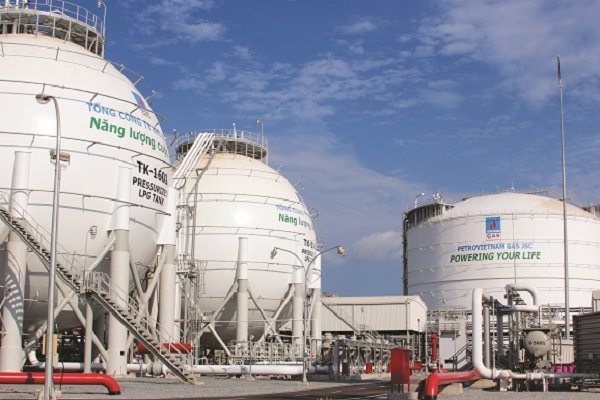In December 2019, Standard Chartered announced the withdrawal from the funding of two coal-fired thermopower projects – Vung Ang 2 (1,200 MW) and Vinh Tan 3 (1,980 MW).

More and more coal-fired thermopower projects in Vietnam have been turned down by large financial institutions.
Four years ago, Bac Lieu province rejected the Cai Cung coal-fired power project and replaced it with a gas-fired project. One month ago, the province approved the $4 billion Bac Lieu LNG-fired power project with the capacity of 3,200 MW to Delta Offshore Energy.
Long An province has also been consistent in shifting from developing coal-fired power projects into gas-fired projects. It has been saying ‘no’ to coal-fired thermopower over the last two years.
| The pollution at Vinh Tan, Duyen Hai and Quang Ninh coal-fired power plants can provide an argument to advocate the views of Bac Lieu and Long An local authorities. |
The pollution at Vinh Tan, Duyen Hai and Quang Ninh coal-fired power plants can provide an argument to advocate the views of Bac Lieu and Long An local authorities.
Thi, in his article on Thoi Bao Kinh Te Sai Gon, cited the forecast by IEA as reporting that the global gas demand would increase by 50 percent in 2014-2040, much more rapidly than other kinds of fuel and twice as much as oil demand.
IEA predicted that Asia would be the major driving force for the growth in natural gas demand in the future, with an average growth rate of 3-4.3 percent per annum. Of this, China and India alone make up 30 percent.
Meanwhile, Thi commented that Vietnam is going contrary to the rest of the world.
Gas-fired power had its golden days which lasted 15 years, from 1999 to 2014. At its highest peak, in 2009, gas-fired power output was three times higher than coal-fired power.
However, with the sixth national power development plan (2007), the seventh (2011) and the revised seventh (2016), coal-fired power became the mainstay.
In 2015, coal-fired power output began surpassing gas-fired power output and has has been maintaining an annual 13 percent growth rate.
“While the world is fleeing from coal-fired power, Vietnam has become more addicted to coal,” Thi commented.
“If Vietnam doesn’t change its view, it will have face immeasurable risks in environmental security and national energy security,” he warned.
The expert believes that Vietnam needs to develop gas-fired power instead of coal power, especially when the former has lower investment rate.
In Asia, the investment rate for gas-fired power is $0.757 million per MW, while it is $1.295 million for supercritical-technology coal-fired power. The figures are $0.81 million and $1.576 million, respectively, in Vietnam.
In general, the investment rate in coal-fired power is 1.8 times higher than in gas-fired power.
Thanh Mai

Will the Mekong Delta have fewer coal-fired power plants?
Ecology expert Nguyen Huu Thien has warned about a series of problems that coal-fired power plants may cause to the Mekong Delta, especially the impact on the ecosystem.

Social organizations propose to stop licensing new coal-fired thermopower projects
Since the government is pursuing a consistent policy not to sacrifice the environment for economic development, coal-fired thermopower projects will no longer be developed.
 While the world is fleeing from coal, Vietnam is becoming increasingly addicted to coal, according to Nguyen Dang Anh Thi, an energy and enviornment expert.
While the world is fleeing from coal, Vietnam is becoming increasingly addicted to coal, according to Nguyen Dang Anh Thi, an energy and enviornment expert.